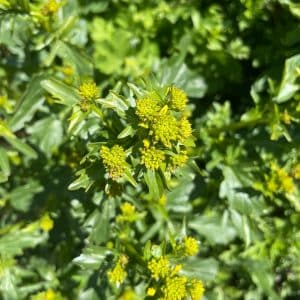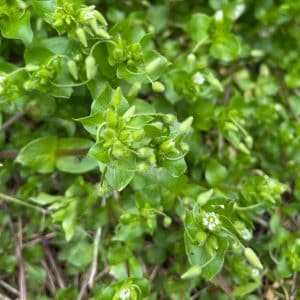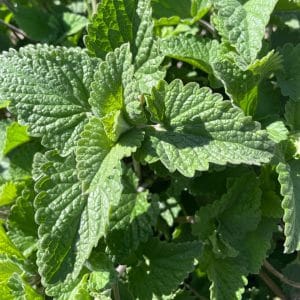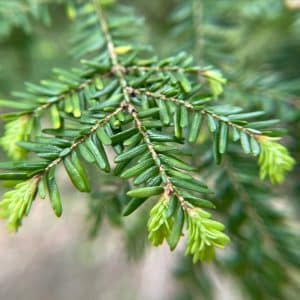Allium tricoccum, known by many as wild leek, is a species of onion native to many parts of North East America as well as Eastern Canada. Other common names include ‘spring onion’, ‘ramps’, ‘wood leek’ and ‘wild garlic’. The other popular name for wild leeks, ‘ramps’, was thought to have been inspired by the old English name of ramson which are a type of European leek. Whilst on a walk or hike through the forest or Appalachian ranges you may catch a hint of the scent of wild leeks in the air. It is a perennial plant that you will find growing in small clusters and groups.
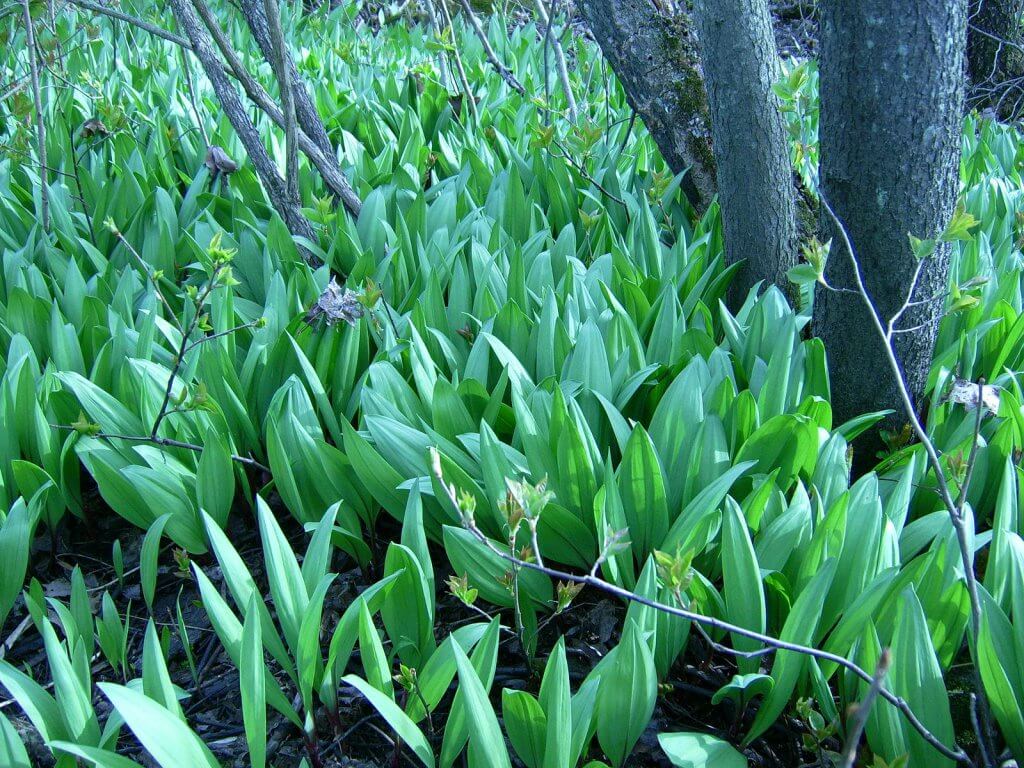
Characteristics
Like onions and other members of the Allium family, wild leek form bulbs. Their small white bulbs sit under the soil, while broad, long, light green leaves, often with a purple or Burgundy tint, form at the base of the plant. Leaves will die back and flower stalks will then form with white flower clusters. They look similar to scallions, however, they are smaller and have a slightly more dainty appearance.
Cultivation
Wild leeks fair best within the wild, however, it is definitely possible to grow your own at home. It can take up to 7 years for ramps to reach maturity, so patience is a key element. They can be grown from seed or by dividing existing plants. Seeds will need to undergo a cold stratification process before germination will begin. They grow best within a partly shaded area where they will not be competing for space with other plant species. Often they will grow best underneath the shade of maple and beech.
Toxicity
Wild leeks are not considered toxic, so the bulb and leaves can be enjoyed. although thorough washing of any wild plants is always recommended.
A toxic lookalike however does exist so exact identification is extremely necessary. The lily of the valley (Convallaria majalis) is an extremely poisonous plant that not only looks similar, it can also be found growing in close proximity to wild leeks.
Foraging and Identification
Wild leek foraging can be a fun and fulfilling activity. They are so versatile in the kitchen and provide many health benefits. Their rise in popularity is however having a negative effect on their wild population numbers. So sustainable and careful harvesting is very important. You must also be aware of their toxic lookalike ‘lily of the valley’, as incorrect identification could be life-threatening. Wild leeks can be found in early April when the buds on the trees are beginning to form. Look for clusters of their broad leaves, particularly at higher elevations.
To allow the wild leeks to regrow next year, cut the bulb at the bottom, leaving behind the end of the bulb and its roots. This process takes longer but is critically important in preserving wild leek populations.
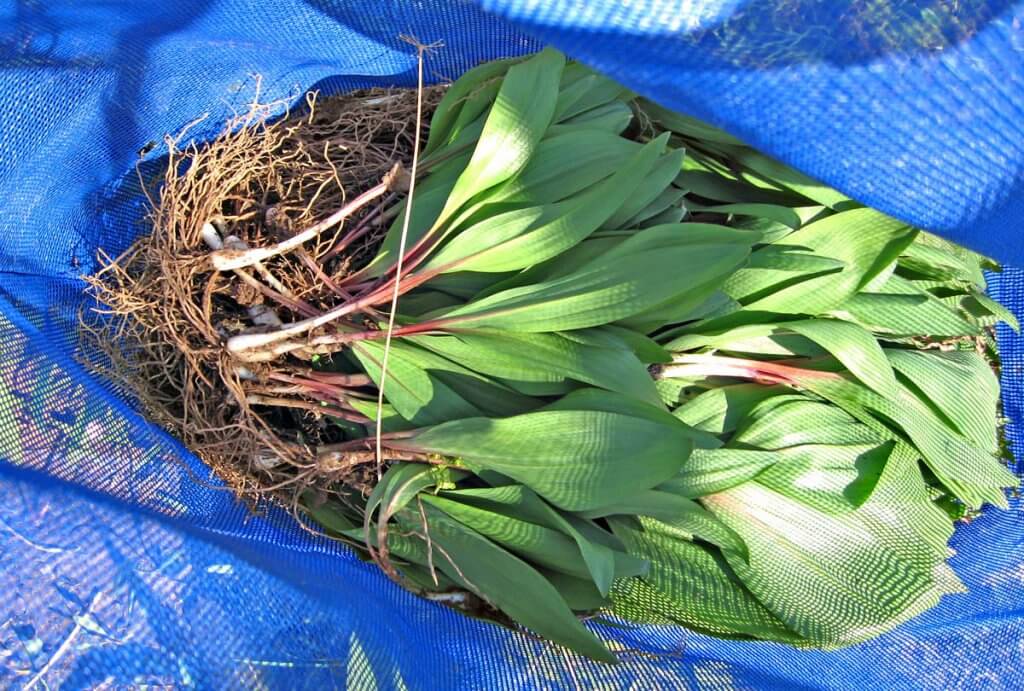
History
Interestingly, wild leek is thought to have been the inspiration behind the name of Chicago. The local native Indian language referred to these plants as ‘chicagou’. The explorer Robert Cavelier discovered that the Chicago river was named after these wild plants that grew along the banks. The plants originally discovered were in fact thought to be wild onions (Allium cernuum), however recent identification has concluded the plants along the river were wild leeks.
Wild leeks also hold special significance in the arrival of spring in some areas. The plant was thought to hold healing potential and could ward off illnesses and colds brought on by a long winter.
Native American tribes have used wild leek for many generations and also greatly understood its significant medicinal value. The Menominee, Cherokee, Potawatomi, and many other groups all used wild leek within their cuisines and dishes. In particular, the Cherokee consumed wild leek in the spring to heal coughs, colds, and earaches. Other uses include crushing the bulbs to treat insect stings and bites and also creating a concoction using the roots to help rid intestinal worms.
Current situation of Wild Leek
Wild leeks are not particularly common, and finding them can be quite rare depending on the area. Within Quebec, they are actually considered threatened and they are now protected by law and legislation. Restrictions involving how many plants and bulbs a person may harvest must be strictly adhered to.
For example in one year, an individual can only collect up to 50 bulbs, only within areas that are not classed as national parks. Restaurants within Canada are also not allowed to sell wild leeks or use them within dishes. Within America, they are also considered valuable, as a title of ‘special concern’ has been bestowed upon wild leek in Rhode Island, Maine, and Tennessee.
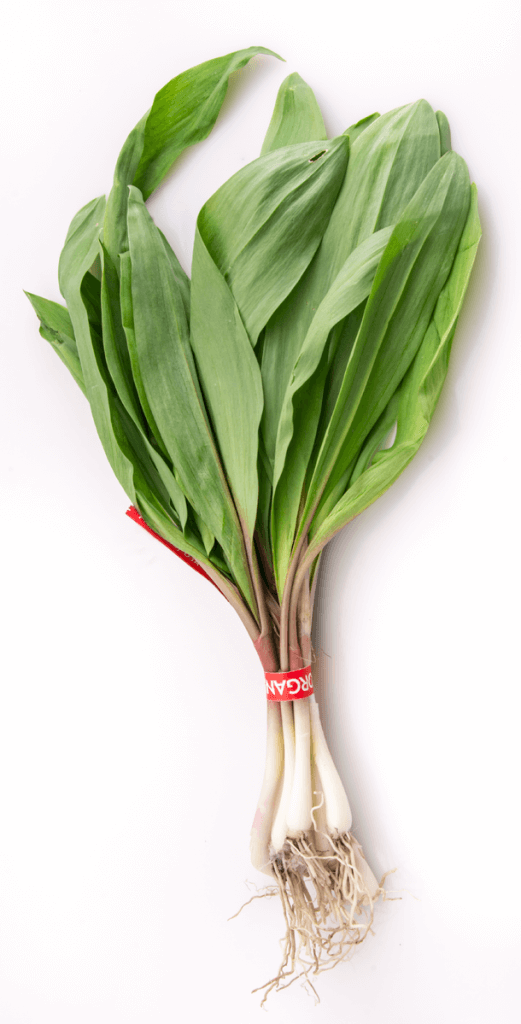
Uses
Culinary uses of Wild Leek
The flavor of wild leek is said to be a mixture of garlic, leeks, and scallions. They are becoming increasingly popular in North American restaurants, which has worried some experts and caused their wild population numbers to be monitored.
A popular wild leek dish involves frying the plant with a mixture of potatoes, bacon, cornbread, and pinto beans. Another popular format in which you may encounter wild leek is the pickled form. They can also be easily swapped into a recipe in place of garlic, onion, shallots, and scallions to add the delicious pungent kick that these plants can also provide. Wild leek leaves can be chopped and added to pestos and stir fry dishes.
Medicinal uses of Wild Leek
Wild leeks have a high number of vitamins and minerals, proving that their historic status of welcoming spring and banishing winter illness could hold true. From high amounts of vitamin C, K, and beta carotene, wild leeks are nutrient-rich. This can aid in good general immune system health. Like many other Allium varieties, wild leeks can aid in lowering high blood pressure and improving overall heart and circulatory health. Wild leeks are also high in antioxidants which can aid in providing protection from some cancers and diseases. Many people also claim that they can aid in reducing inflammations and promoting healthy digestion due to active chemicals found within the plant.
Did you know…
Within many towns throughout West Virginia, North Carolina, and Tennessee an annual festival is held in which wild leek is celebrated and consumed at the beginning of spring. ‘Feast of the Ramson’, ‘Cosby Ramp Festival’ and ‘Ramps and Rails Festival’ are attended by thousands of locals, tourists, and wild leek enthusiasts alike.
Conclusion
With a broad number of potential uses in the kitchen and a popular flavor, harvesting and foraging wild leeks is a great way to make use of local food sources. Be sure not to over forage, as we must ensure the plant remains wild and available for generations to come to enjoy and savor. If local populations are low, consider growing your own tasty supply at home.
—————Written by Hannah Sweet
Hannah is a freelance writer and graphic designer from the UK. With a penchant for travelling, photography and all things botanical, she enjoys writing about a wealth of topics and issues, from conservation and slow living, to design and travel. Learn more about her writing and design services at www.sweetmeanders.co
Many of our readers find that subscribing to Eat The Planet is the best way to make sure they don't miss any of our valuable information about wild edibles.
See our privacy policy for more information about ads on this site

